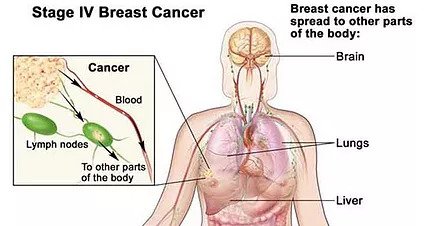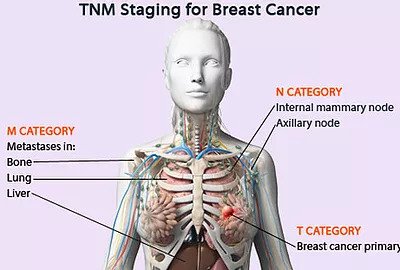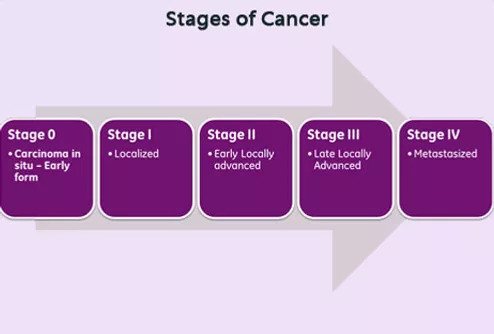

Doctors use the stages of cancer to classify cancer according to its size, location, and extent of spread. Staging helps doctors determine the prognosis and treatment for cancer. The TNM staging system classifies cancers according to:
- Tumor (T): Primary tumor size and/or extent
- Nodes (N): Spread of cancer to lymph nodes in the regional area of the primary tumor
- Metastasis (M): Spread of cancer to distant sites away from the primary tumor.

In Some cases doctors use different method for determining the stages. In this case Cancer is typically labeled in stages from I to IV, with IV being the most serious. Groups are based on specific information about the tumor and how it affects the rest of your body.
It’s important to understand your cancer stage for several reasons:
Treatment:
It helps doctor decide which treatment will work best. An early-stage cancer may call for surgery while an advanced-stage cancer may need chemotherapy.
Outlook:
Your recovery will depend in part on how early the cancer is found. Your stage gives you an idea of your possible outcomes.
But Stages tell you how advanced the cancer is.
Stage 0: means there’s no cancer, only abnormal cells with the potential to become cancer.
Stage I: means the cancer is small and only in one area. (also called early-stage cancer.)
Stage II: mean the cancer is getting large and growing into nearby tissues or lymph nodes.
Stage III: mean the cancer is larger and has grown into nearby tissues or lymph nodes.
Stage IV: means the cancer has spread to other parts of your body. (also called advanced cancer.)
A physical exam and several tests are used to determine above stages — an estimate of how far the cancer has spread. Tests may include :
- Blood and other lab tests
- maging scans.
- X-rays or MRI or CT Scan or Ultrasound.
- A biopsy , in which a small piece of tissue is taken and looked under a microsope.
- Grade: This is how cancer cells look under a microscope.
- Low grade means they look a lot like normal cells.
- High grade means they look very abnormal.
- Low-grade cancer cells grow more slowly and are less likely to spread than high-grade.
- Location: Where the tumor is in your body may make it harder to treat.
- Tumor markers: These are things in your blood or urine that are at higher levels when you have certain kinds of cancer.
- Genetics: The DNA of the cancer cells can tell your doctor if it’s likely to spread and what treatment may work.
Once doctor has all this information, he can determine your overall stage. Your cancer stage typically stays the same as when you’re first diagnosed, no matter what happens with the disease. This is because your treatment options and chances of recovery usually are based on how early your cancer is found.
Prevention is better than Cure

